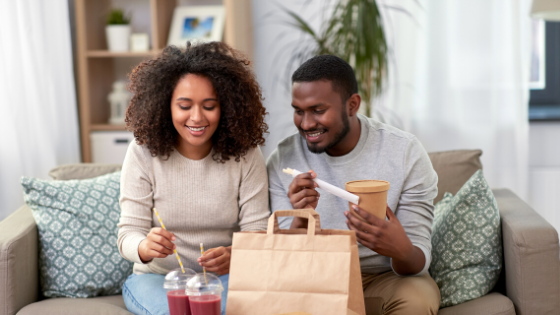The coronavirus has ground many common activities to a halt, and restarting them can be challenging. Even when you’re doing something as simple as ordering food.
After all, when you’re taking great pains to control everything and everyone you come into contact with, restaurant food introduces a host of new variables.
Here are answers for a few safety questions you’re probably asking, along with tips you can use to stay safe.
Which Is Safer: Takeout or Delivery?
First, the most basic question: is takeout or delivery safer?
Currently, there is little evidence that the coronavirus is transmitted via surfaces and no evidence that it is transmitted by food. The riskiest part of takeout or delivery is person-to-person contact, which means the safest option is the one with minimal contact.
You can do takeout or delivery safely, so long as you keep six feet of distance when you pick up your food. Delivery may be marginally safer thanks to the rise of contactless delivery, which lets you order and pay electronically and ask workers to leave a delivery at your door. This way, customers and workers never need to touch, and you don’t need to venture outside of your home.
How Risky are Packaging and Utensils?
Packaging and utensils present a low risk. An infected person would have to contaminate their own hands, touch the packaging, and deliver it to you so that you can touch the same place and then touch your nose or mouth.
If you’re really cautious (and to be on the safe side), wipe down the packaging with disinfectant and recycle the bags. Utensils are a relatively low risk, but they still increase the amount of potential hand-to-hand contact and you won’t need them to eat in your own home anyway, so just ask the restaurant to leave them out.
How Safe Is the Food Itself?
To be clear, the CDC, the FDA, and WHO have all stated that food is not likely to be a transmission source for the virus. So long as proper food preparation guidelines are followed, there is little realistic chance of a respiratory droplet from an infected person making its way onto your food or food wrappers. And even if the virus did manage to get to your food, it cannot multiply once it gets there like bacteria can.
The risk thus lies in interacting with people, not the food itself, which means you are free to order hot or cold food as you like. Still, if you’re worried, warm the food. Heat kills most pathogens, and heat zaps the moisture that the coronavirus thrives in.
Nonetheless, there is little reason to believe cold or raw foods like sushi is riskier than a hamburger or fresh produce.
Navigating the Coronavirus Pandemic
The pandemic has altered many basic facts of how we go about our daily lives, and food is no exception. Unfortunately, every individual aspect of daily life is now a safety concern, and it can be difficult to keep track of new developments.
If you’re trying to keep your team abreast of new changes in the pandemic, make sure to check out our blog for actionable tips your team can share to keep everyone safe.
